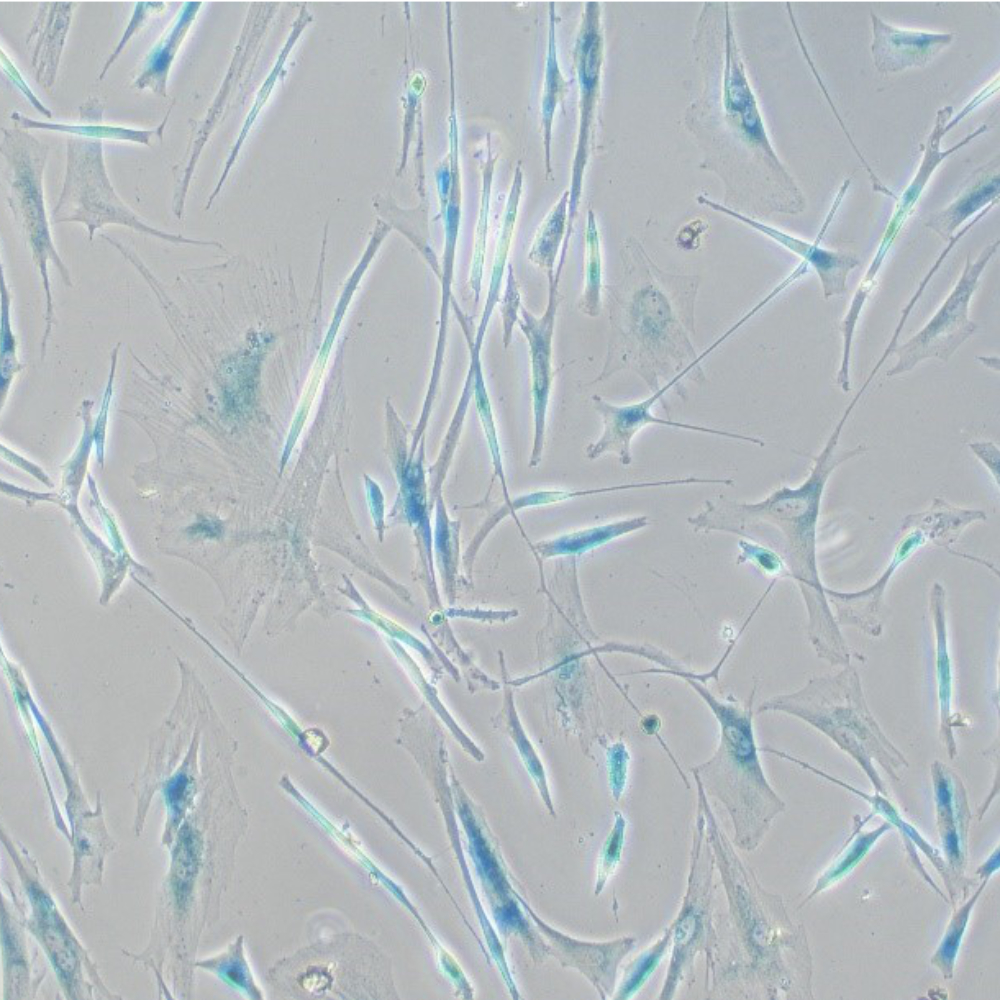Translational research in pediatric low-grade glioma
The working group “Translational Pediatric Low-Grade Glioma Research”, headed by Dr. Florian Selt, is part of the Clinical Cooperation Unit Pediatric Oncology at the DKFZ.
Our group focuses on identifying new drugs for the treatment of pediatric low-grade gliomas (pLGG), the most common brain tumors in children and adolescents. Our aim is to lay the preclinical foundations for further clinical testing of both new drugs and drugs already approved in other clinical areas of application. We pay particular attention to the identification of senolytically active substances, i.e. substances that specifically kill pLGG cells in a state of oncogene-induced senescence (OIS).
To this end, we use and develop globally unique cell culture models of pLGG that are derived from patient material and also allow analysis in the state of OIS.

Spotlight - Selt Group
New options for the treatment of low-grade gliomas
Low-grade gliomas (pLGG) are the most common brain tumors in children and adolescents and are molecularly characterized by an overactivation of the MAPK pathway. Current therapies - including chemotherapy and targeted inhibitors of the MAPK signaling pathway (MAPKi) - often show limited long-term efficacy and there is therefore an urgent need for new and complementary therapeutic options.
In vitro pLGG models derived from patient material
We are developing new cell culture models based on fresh tumor material from the operating room, which is obtained as part of the LOGGIC-Core Registry. With the help of the viral protein SV40-TAg, oncogene-induced senescence is temporarily bypassed and the cells are induced to divide and proliferate. The OIS program can be switched on again by removing SV40-TAg. The aim is to develop a comprehensive set of pLGG models that reflect the diversity of pLGG subgroups and the molecular changes they contain.
New therapeutic (senolytic) approaches for the treatment of pLGG
We are developing new cell culture models based on fresh tumor material from the operating room, which is obtained as part of the LOGGIC-Core Registry. Using the viral protein SV40-TAg, oncogene-induced senescence is temporarily bypassed and the cells are induced to divide and proliferate. The OIS program can be switched on again by removing SV40-TAg. The aim is to develop a comprehensive set of pLGG models that reflect the diversity of pLGG subgroups and the molecular changes they contain.
Peptide vaccination for pLGG
Together with the working group of Dr. Christian Seitz (KiTZ) and the working group of Dr. Angelika Riemer (DKFZ), we are exploring the possibility of vaccination against pLGG. To this end, we are trying to find out whether pLGG tumor cells present their typical genetic changes to the immune system and whether the patient's immune system can be specifically trained to act against the tumor cells by means of a corresponding vaccination.
- Sigaud R, Brummer T, Kocher D, Milde T, Selt F. MOST wanted: navigating the MAPK-OIS-SASP-tumor microenvironment axis in primary pediatric low-grade glioma and preclinical models. Childs Nerv Syst. 2024 Oct;40(10):3209-3221. doi: 10.1007/s00381-024-06463-z. Epub 2024 May 25. PMID: 38789691; PMCID: PMC11511703.
- Selt F, El Damaty A, Schuhmann MU, Sigaud R, Ecker J, Sievers P, Kocher D, Herold-Mende C, Oehme I, von Deimling A, Pfister SM, Sahm F, Jones DTW, Witt O, Milde T. Generation of patient-derived pediatric pilocytic astrocytoma in-vitro models using SV40 large T: evaluation of a modeling workflow. J Neurooncol. 2023 Dec;165(3):467-478. doi: 10.1007/s11060-023-04500-6. Epub 2023 Nov 24. PMID: 37999877; PMCID: PMC10752915.
- Selt F, Sigaud R, Valinciute G, Sievers P, Zaman J, Alcon C, Schmid S, Peterziel H, Tsai JW, Guiho R, Martínez-Barbera JP, Pusch S, Deng J, Zhai Y, van Tilburg CM, Schuhman MU, El Damaty A, Bandopadhayay P, Herold-Mende C, von Deimling A, Pfister SM, Montero J, Capper D, Oehme I, Sahm F, Jones DTW, Witt O, Milde T. BH3 mimetics targeting BCL-XL impact the senescent compartment of pilocytic astrocytoma. Neuro Oncol. 2023 Apr 6;25(4):735-747. doi: 10.1093/neuonc/noac199. PMID: 35977048; PMCID: PMC10076946.
- Selt F, Hohloch J, Hielscher T, Sahm F, Capper D, Korshunov A, Usta D, Brabetz S, Ridinger J, Ecker J, Oehme I, Gronych J, Marquardt V, Pauck D, Bächli H, Stiles CD, von Deimling A, Remke M, Schuhmann MU, Pfister SM, Brummer T, Jones DT, Witt O, Milde T. Establishment and application of a novel patient-derived KIAA1549:BRAF-driven pediatric pilocytic astrocytoma model for preclinical drug testing. Oncotarget. 2017 Feb 14;8(7):11460-11479. doi: 10.18632/oncotarget.14004. PMID: 28002790; PMCID: PMC5355278.


